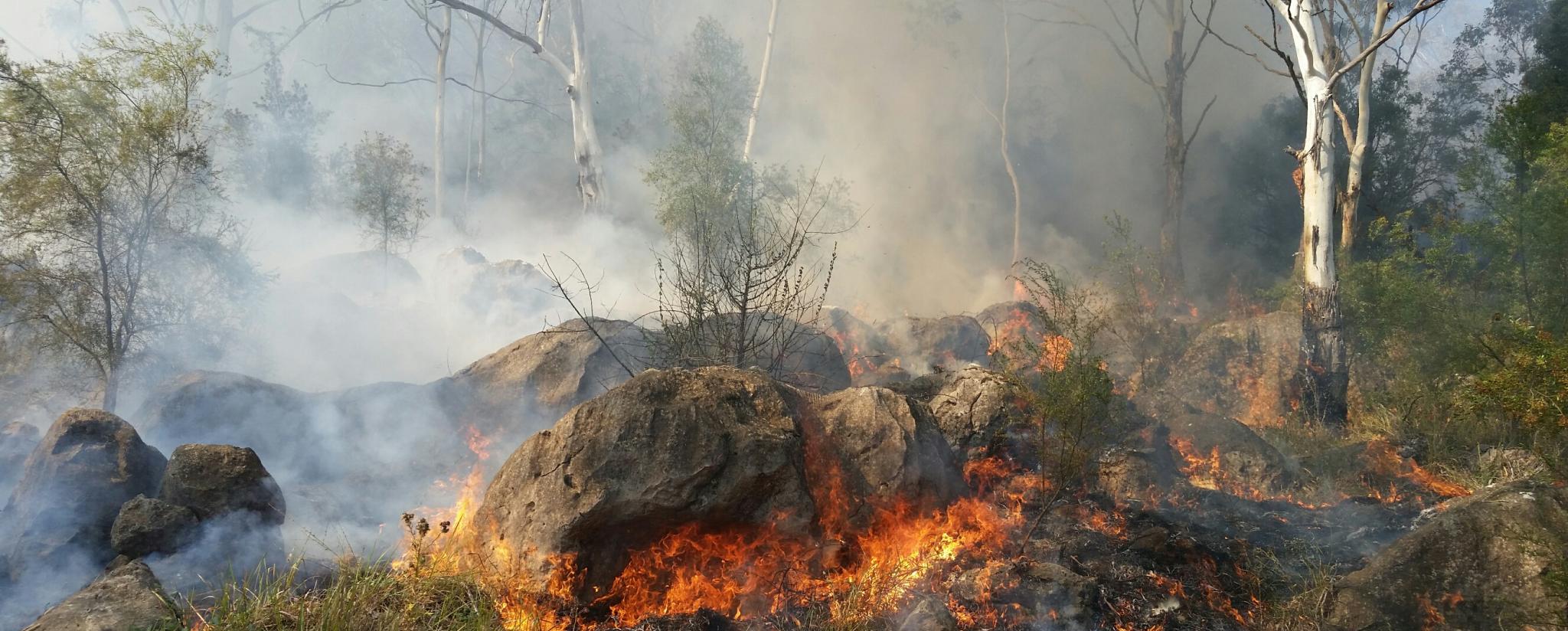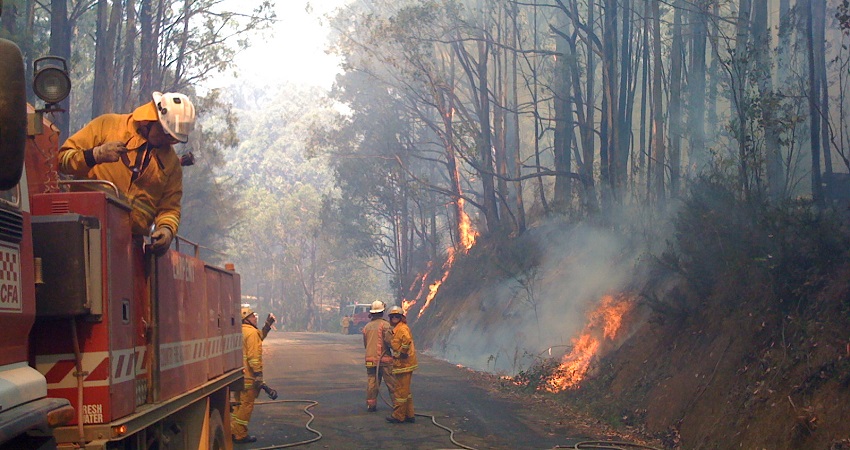BMP Insights: Secret Components and Advantages of a Bushfire Management Plan
BMP Insights: Secret Components and Advantages of a Bushfire Management Plan
Blog Article
Best Practices in Bushfire Administration for Comprehensive Fire Protection
In the world of bushfire management, the quest for comprehensive fire security requires a meticulous method that includes different important elements. As we browse via the subtleties of these best methods, an expedition right into the detailed internet of approaches and methods waits for, guaranteeing a much deeper understanding of the diverse landscape of bushfire monitoring for thorough fire defense.
Risk Analysis and Planning
In bushfire administration for fire defense, the initial action entails performing a comprehensive risk analysis and developing a thorough strategy to reduce possible risks. Risk analysis is an essential process that involves determining, evaluating, and reviewing potential dangers that can result in a bushfire. This analysis takes into consideration various aspects such as weather, topography, fuel lots, and human activities in the location. By comprehending these risks, fire security authorities can prioritize locations that are most at risk to bushfires and allocate resources properly.
Following the risk evaluation, the following vital action is to develop a thorough plan to resolve the determined dangers. This plan needs to lay out techniques for avoidance, preparedness, feedback, and recuperation in the occasion of a bushfire. It must additionally consist of steps for community communication, engagement, and discharge procedures. By having a distinct plan in position, emergency situation services can act promptly and effectively to protect lives, building, and the atmosphere during a bushfire episode. Efficient risk analysis and planning are basic elements of bushfire monitoring for making certain detailed fire protection.
Vegetation Administration Strategies
After carrying out a complete risk evaluation and creating an extensive strategy for bushfire management, the emphasis changes to carrying out effective greenery administration strategies. Plant life management plays a vital role in minimizing the strength and spread of bushfires. One vital technique is producing defensible room around buildings by clearing flammable plant life and preserving a risk-free range in between vegetation and structures. This assists to produce a barrier area that can reduce the progress of a fire and supply a safer atmosphere for firemans to safeguard residential or commercial properties.
In enhancement to creating defensible area, recommended burning is one more essential greenery administration method. Suggested burns entail deliberately setting fires under controlled conditions to decrease the build-up of gas, lower the likelihood of high-intensity wildfires, and advertise environment health and wellness. By tactically shedding areas with excess plant life, gas levels are lowered, making it harder for fires to spread out swiftly and frantically.

Community Involvement and Education And Learning
Reliable neighborhood interaction and education are important components in building a positive and durable method to bushfire management. By entailing area members in the planning and implementation of bushfire monitoring methods, stakeholders end up being active individuals in guarding their areas and homes. Neighborhood engagement cultivates a feeling of shared responsibility and empowers homeowners to take possession of their safety.
Education and learning plays a critical duty in furnishing individuals with the knowledge and abilities needed to mitigate bushfire threats successfully. Offering educational sources on fire prevention, discharge procedures, and the relevance of very early detection can significantly boost neighborhood preparedness. Informing locals on the neighborhood bushfire environment, including fire actions and risk aspects, allows them to make informed decisions throughout risky situations.
With recurring engagement and education and learning campaigns, communities can establish a cumulative understanding of bushfire threats and work collaboratively to reduce the impact of wildfires. more helpful hints By fostering a culture of readiness and strength, area members can enhance their capability to react effectively to bushfire emergencies and secure both lives and residential property.

Very Early Discovery and Warning Equipments
Neighborhood engagement and education and learning act as foundational columns in establishing aggressive bushfire administration practices, preparing for the application of durable very early detection and caution systems. Early discovery and warning systems are crucial parts in alleviating the impact of bushfires on areas and the atmosphere. These systems incorporate a variety of modern technologies and methods aimed at determining and signaling authorities and citizens to possible fire outbreaks quickly and efficiently.
One crucial element of early discovery systems is using advanced tracking modern technologies such as satellite imagery, drones, and weather condition terminals to spot signs of possible fire ignition. These technologies supply real-time information that can be assessed to identify fire-prone areas and activate very early cautions. In addition, the integration of community-based tracking networks and automated sharp systems can boost the performance of very early detection efforts by involving locals in reporting prospective fire dangers and obtaining prompt cautions.
Effective early discovery and caution systems depend on a multi-faceted technique that incorporates technological development, neighborhood participation, and speedy emergency action methods to make certain the prompt and worked with monitoring of bushfire occurrences. By purchasing these systems and promoting partnership between stakeholders, neighborhoods can enhance their resilience to bushfires and minimize the associated risks.
Emergency Response and Discharge Strategies
A detailed and well-coordinated emergency response and discharge strategy is important for effectively guarding lives and residential or commercial property throughout bushfire occurrences. These plans should be diligently crafted, thinking about elements such as the topography of the area, the density of plant life, and the prospective speed and instructions of the fire's spread.
One critical element of an emergency feedback strategy is the establishment of clear interaction networks to disseminate timely and exact info to residents and emergency situation -responders. This can include using alarms, mobile informs, social media, and area meetings to ensure that every person is notified and knows what activities to take.
Emptying courses should be pre-identified and frequently maintained to guarantee they are easily accessible during emergency situations. In addition, marked evacuation facilities must be established to supply shelter, clinical support, and assistance services to evacuees.
Normal drills and exercises are vital to familiarize citizens with evacuation procedures and check the performance of the plan. By continuously updating and evaluating emergency situation response and evacuation plans, neighborhoods can improve their preparedness and strength in the face of bushfire risks.
Final Thought
In verdict, reliable bushfire management requires an extensive technique that consists of danger analysis, plant life management, community engagement, early detection systems, and emergency response plans. By executing these finest methods, areas can much better shield themselves resource from the destructive effects of bushfires - BMP. It is important to focus on aggressive steps to mitigate the dangers presented by bushfires and make certain the safety and security and well-being of individuals and communities at risk
After conducting a detailed threat assessment and developing a comprehensive plan for bushfire management, the focus changes to applying reliable vegetation monitoring approaches.Reliable neighborhood useful link interaction and education are important components in building a positive and resistant technique to bushfire administration. By involving area participants in the planning and implementation of bushfire monitoring methods, stakeholders become active individuals in protecting their homes and communities.Area interaction and education offer as fundamental pillars in developing proactive bushfire monitoring techniques, laying the groundwork for the application of robust very early discovery and warning systems.In conclusion, efficient bushfire monitoring requires a thorough method that consists of risk evaluation, vegetation administration, area engagement, very early discovery systems, and emergency situation response strategies.
Report this page